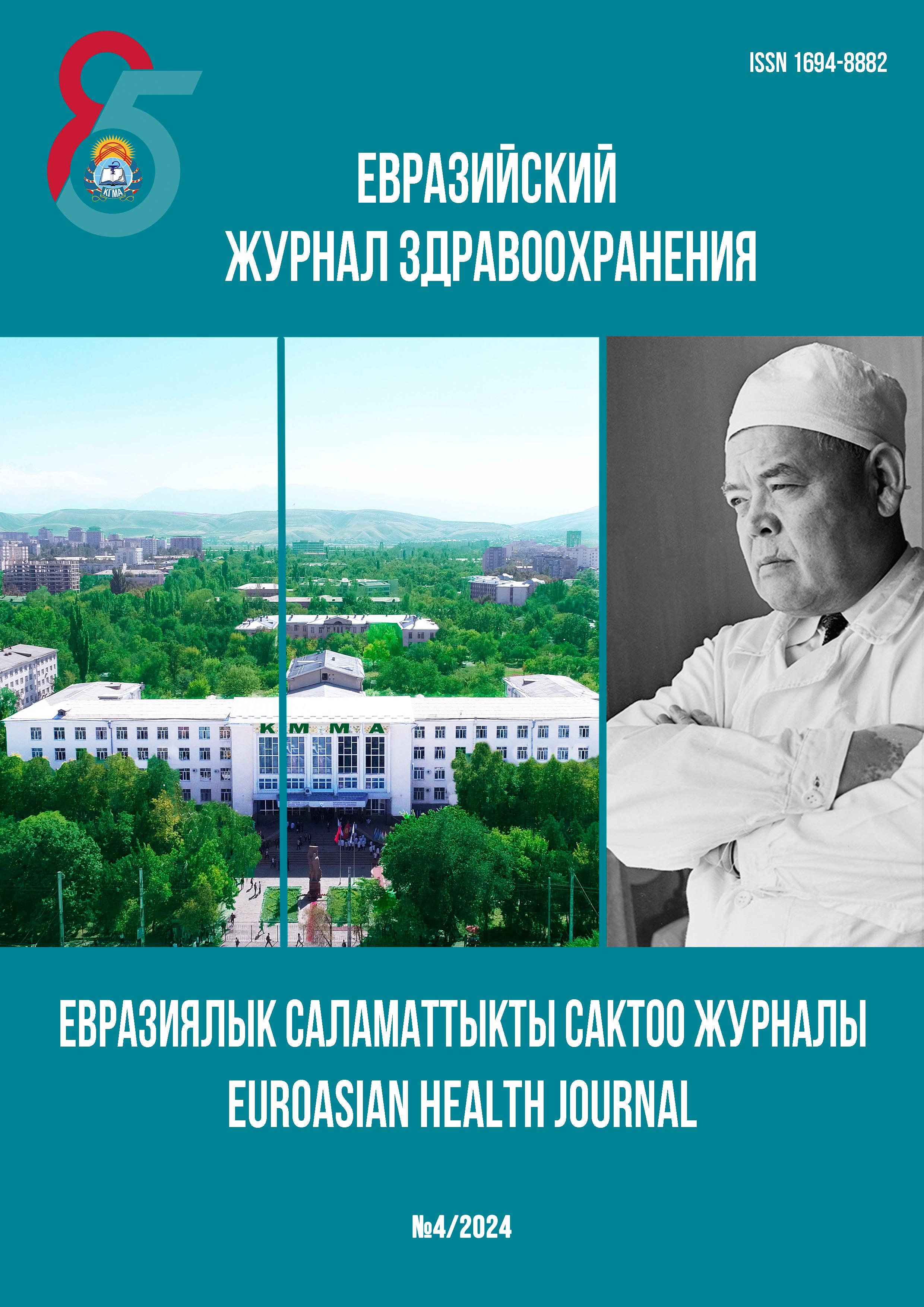SURGICAL TREATMENT TACTICS FOR PELVIC FRACTURES
DOI:
https://doi.org/10.54890/1694-8882-2024-4-173%20Abstract
We analyzed the conservative and surgical treatment of 769 patients with stable and unstable pelvic fractures. The study group included patients with fractures of all types according to the ASIF classification. The average follow-up period after surgery was 1 year. Treatment results were assessed based on a clinical examination, analysis of radiographs, and the Mattis rating scale. Good results (76%) were obtained in patients with pelvic fractures type B3, C2, according to the classification of A.O. The number of satisfactory and unsatisfactory results – 15% and 9%, respectively – was obtained in patients in the group with the most severe type C3 injuries. Complications in the form of suppuration, impaired stability of fixation with loss of reposition were observed in 5 people (9%), two patients from group 3 died. The data obtained allow us to conclude that immersion osteosynthesis using various structures, performed as early as possible (damage control) remains today the gold standard in the treatment of unstable pelvic fractures. The greatest number of complications was observed in the group of vertically unstable C3 pelvic fractures. The obtained data correlate to a certain extent with the data of domestic and foreign literature.
Keywords:
unstable pelvic fractures, pelvic osteosynthesis, external fixation, polytraumaReferences
1. Лазарев А.Ф. Оперативное лечение повреждений таза [автореф. дис.]. М.; 1992. 38 с. Доступно по: https://medical-diss.com/docreader/526577/a?#?page=1. Ссылка активна на 25.06.2024.
2. Гольдштейн С.Л. Введение в сейсмотехнику и сейсмологию. М.: ИРРО; 1994:1998.
3. Соколов В.А. Множественные и сочетанные травмы (Практическое руководство для врачей - травматологов). М.: ГЭОТАР-Медиа; 2006. 510 с.
4. Анкин Л.Н., Зубиков Б.Ц. Практическая травматология. Европейские стандарты диагностики и лечения. М.: Книга плюс; 2002. 480 с.
5. Солодовников П.Н. Лечение сочетанных травм и заболеваний конечностей. Матер. Всерос. науч. конф. М.; 2003:293-294.
6. Литвина Е.А. Современное хирургическое лечение множественных и сочетанных переломов костей конечностей и таза [Автореф. дис.]. М.; 2010. 38 с. Доступно по: https://new-disser.ru/_avtoreferats/01004803413.pdf. Ссылка доступна на 25.06.2024.
7. Зулкаржев Л.А. Лечение сочетанных травм и заболеваний конечностей. Тезисы Всероссийской конференции. М.; 2003:129-130.







